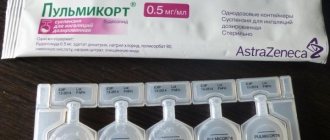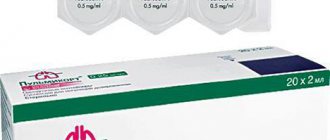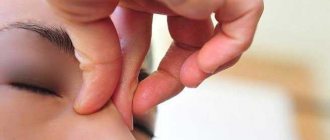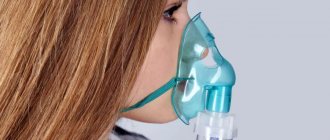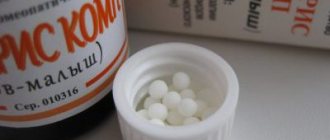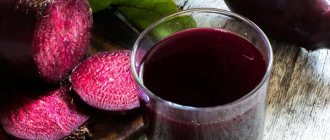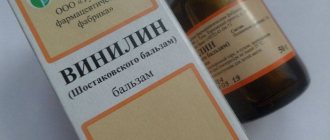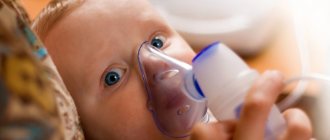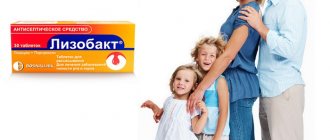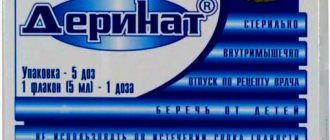Is it possible to do inhalation with adenoids?
Adenoids are enlarged tonsils that initially have an important immune function and protect the respiratory tract from infections.
However, in some situations, enlarged tonsils themselves turn into a breeding ground for bacterial infection. Often, against the background of acute respiratory infections, inflammation of the tonsils occurs and the development of a pathology such as adenoiditis. In combination with the inflammatory process, enlarged tonsils provoke the development of:
- otitis;
- sinusitis;
- inflammation of the respiratory tract.
The pathology can also cause neurological disorders in the child:
- memory impairment;
- impaired concentration;
- decreased learning ability.
Doctors distinguish three degrees of adenoid growths:
- the tonsil covers the upper part, no more than 30%, of the height of the nasal passages;
- the tonsil blocks about 60% of the passage;
- The tonsil closes the entire nasal passage.
There are two main methods of treating this disease:
- conservative therapy - with the help of medications;
- surgical removal - adenotomy. Used for stage 3 disease development.
Inhalation in the treatment of adenoids is used as an alternative, auxiliary therapy. It is advisable to use the technique when the tonsils are enlarged 1-2 degrees and the presence of an inflammatory process. Inhalation helps eliminate swelling of the tonsils, disinfects and moisturizes the nasal cavity.
Due to the fact that inhalation therapy has become very popular, this question arises quite often. It is important to understand here that inhalations can be done for adenoids, but this procedure does not cure the disease, but only alleviates the symptoms. Tonsils cannot be reduced in this way. But it is quite possible to relieve nasal congestion and other side effects.
How does inhalation work?
The procedure has a symptomatic effect. It prevents the progression of the disease, thereby helping to improve the child’s condition. It is carried out not only during a calm course of the disease, but also during exacerbations.
Experts distinguish four stages of the disease. Many people are interested in whether it is possible to do inhalations for adenoids if the disease has been advanced. The most effective procedure will be in the first or second stage. During this period, adenoids can be treated conservatively. If the disease has reached the third or fourth stage, surgical intervention is inevitable. Therefore, at the first symptoms you should consult a doctor.
At the initial stages of inhalation they have the following effects:
- reduce swelling of the tonsils;
- help improve blood microcirculation and lymph outflow;
- strengthen the protective function of the immune system;
- prevent the development of inflammation.
Preparations for inhalation: how to dilute, dosages, recipes
For adenoids, doctors categorically do not recommend classic steam inhalations. Steam creates favorable conditions for the development of pathogenic microflora, which in turn can aggravate the patient’s condition.
The following types of inhalation can be used to treat these diseases:
- dry - you can use salt, essential oils;
- wet - only in the form of water procedures - taking a warm bath with the addition of essential oils.
The most effective method is to use a nebulizer. The difference between this modern device and conventional steam inhalers is that it does not heat the medicine and does not turn it into steam. Depending on the model, the nebulizer, using ultrasound or a compressor, makes an aerosol from the drug, which ensures maximum delivery of the drug to the site of the disease.
Moreover, the models of these inhalers differ in the size of the particles produced in the air mixture. The smaller the diameter of the particles, the deeper they can penetrate into parts of the respiratory system. The tonsils are located at the top of the respiratory tract. Therefore, it is advisable to use models that produce a coarse air mixture.
Compressor types of nebulizers have these characteristics. However, you should not immediately give up membrane or morning sound devices. Modern models often have adjustments to the diameter of the particles produced.
For adenoids, for inhalation with a nebulizer, the following drugs are most often used:
- “Derinat” is an immunostimulating agent that eliminates pain and increases local immunity. For inhalation with derinat, a 0.25% solution of the drug is used, which is diluted with saline in proportions of 1 to 3.
- "Dioxidin" is an antibacterial drug. Not an antibiotic. Used in the treatment of purulent respiratory diseases. For inhalation of dioxidine, a 0.5% drug is used, which is diluted with saline in proportions of 1 to 4.
- inhalation with Miramistin. The drug has antiseptic properties and is used for infectious lesions of the nasopharyngeal tonsil. To carry out the Miramistin procedure for children under 12 years of age, use a 0.01% solution, which is diluted with saline in proportions of 1 to 2.
- mineral water, saline or soda solution, procedures are carried out to moisturize the mucous membrane.
To prepare a saline solution, there is the following recipe:
- you need to take 1 teaspoon of table or sea salt;
- dilute it in 250 ml of saline solution.
The course of therapy and medications for inhalation with a nebulizer are prescribed exclusively by the attending physician. When receiving therapy using a nebulizer, a number of conditions must be met:
- medicines are diluted with saline solution or mineral water without gas;
- if the product was stored in the refrigerator, before use it should be removed and allowed to stand for several minutes at room temperature;
- in nebulizers, essential oils and herbal infusions are not used - this can damage the device.
An individual course of therapy can only be selected by a specialist. Typically, the duration of one session for children under 12 years of age is from 5 to 10 minutes. For older patients – up to 15 minutes.
When choosing a particular drug for inhalation for adenoids, one should take into account the individual characteristics of each individual patient, as well as the general contraindications of each drug taken.
For example, there are the following contraindications to the use of aminocaproic acid:
- Disease of the hematopoietic system, accompanied by increased formation of blood clots.
- Severe renal and liver dysfunction.
- Presence of cardiovascular insufficiency.
- Reduced blood pressure on the walls of peripheral vessels.
- Problems with trophism of internal organs (especially the brain).
- Intolerance to the constituent components of the drug.
As for the side effects of aminocaproic acid, these include:
- skin rashes of various locations;
- dyspeptic disorders;
- headache and dizziness;
- disruption of normal nasal breathing;
- lowering blood pressure;
- acute form of renal failure;
- increased risk of seizures;
- hemorrhages into the pericardial space.
Pulmicort also has a number of contraindications. These include:
- Hypersensitivity to the constituent components of the drug.
- Open form of pulmonary tuberculosis, as well as skin tuberculosis.
- The presence of fungal, bacteriological and viral infections in an active state.
- Neoplasms and oncological processes.
- Various forms of dermatitis.
Side effects after using Pulmicort include:
- irritation on the mucous membranes of the oral cavity and nasopharynx;
- bronchospasm;
- the occurrence of candidiasis.
Efficiency of inhalations
One of the effective methods of improving the condition of a child with adenoids is inhalation. They are used both during the quiet course of the disease and during periods of exacerbation.
It makes sense to carry out the procedure only at stages 1 and 2 of the disease, when conservative treatment can still affect the growth. If the disease has progressed to stage 3, in which the baby is unable to breathe normally through the nose, inhalations have virtually no effect.
Inhalations are effective only in the initial stages of adenoids
For adenoids, inhalations have the following effect:
- reduce swelling;
- improve the outflow of blood and lymph from the tonsils;
- prevent the occurrence of the inflammatory process;
- strengthen the immune system.
Inhalations for adenoiditis are intended to eliminate inflammatory symptoms - congestion of the nasal passages, cough, dry nasopharyngeal mucosa, drainage of mucous secretion along the back wall of the pharynx, etc. The effect of the procedures is as follows:
- reducing the intensity of inflammation;
- prevention of possible complications (pharyngitis, laryngitis and others);
- elimination of irritation and pain;
- reducing the intensity of the runny nose;
- thinning of mucus in the nasal cavity;
- moisturizing the mucous membrane of the nasopharynx.
Inhalations at home without a nebulizer
Traditional medicine has a wide range of recipes for the treatment of adenoids. In the absence of inhalation devices, you can use other methods of therapy that are approved by official medicine. These include:
- dry. Place a couple of drops of essential oil on a handkerchief and let the patient breathe for about 5 minutes. Heat 0.5 kg of table or sea salt in a frying pan, pour it into the pan and let the patient breathe, shaking the container periodically;
- wet. You should add aromatic bath salts or essential oil to your bath. The water temperature should not be hotter than 37 degrees. Session duration is 15 minutes.
The device does not heat the medicinal mixture, but turns it into an aerosol. This ensures rapid delivery of the drug to the tonsils. Therefore, doing inhalations at home using a compressor inhaler is most advisable.
When choosing a device, it is necessary to take into account that the tonsils are located in the upper part of the respiratory tract. Aerosols with large particle sizes are better suited for therapy. It is more useful to breathe with a compression nebulizer. At the same time, there is no need to abandon other types of devices. Moreover, many models are equipped with replaceable filters with different cell sizes.
Types of inhalations
The main goal of therapeutic inhalations is to reduce the size of the adenoids. Today there are three main types of procedure:
- Steam inhalation for adenoids. Modern medicine does not recommend this procedure for children. An unpleasant consequence after the procedure may be a burn to the baby’s thin mucous membrane. Also, high temperature provokes vasodilation and increases swelling;
- Dry inhalations for adenoids. To carry out the procedure you will need essential oil. You can use fir, sea buckthorn, cypress, eucalyptus or mint. To make breathing easier, place 3-5 drops of oil on a dry handkerchief and let the baby breathe. To prevent enlarged adenoids from interfering with a child’s sleep at night, a handkerchief soaked in a small amount of essential oil can be left next to the pillow in his crib;
- Salt inhalations for adenoids. For the procedure, exclusively sea salt is used, since it contains a large amount of minerals and iodine. 1 kg of salt should be heated well in a dry frying pan, you can use another container. After that, add 3-5 drops of essential oil (eucalyptus, fir or mint). Next, warm sea salt should be poured into a bowl or cup and given to the child so that he can breathe in the vapor. You should explain to the baby that breaths should be deep.
Inhalation treatment of adenoids in children
This popular, in-demand technique uses four options:
dynamics they are characterized by a quick effect, a positive, lasting result. These include:
- Steam exposure. Steam is used: the healing properties of which
are that by penetrating into the upper, lower, and distant sections of the nasopharynx it reduces the hyperemia of its mucous surfaces. Swelling subsides, inflammation fades, subsides, and sources of harmful microflora are blocked. They use specially adapted steam nebulizers. The doctor will advise the type of such device and explain the steps of use according to the included instructions.
- Heat-moisture effect on sore tonsils. - This
a common method (type) of medicinal inhalation, successfully used for adenoids and various respiratory diseases. The heated medicinal substance penetrates into the distant lobes, visceral, hard-to-reach areas of the nasopharyngeal epidermis. The moist medicinal substance lingers for a long time in the penetrated cavities (unlike steam).
Such ENT devices, nebulizers, have gained popularity. They are readily purchased for children susceptible to frequent colds, bronchitis, chronic rhinitis,
sinusitis, asthmatic attacks.
- Wet inhalation. It is given to children in circumstances where
it is impossible to apply the previous variations of treatment (steam, warmly moist). The solutions that are used are those containing antibiotics “Ambroxol”, “Dekasan”, mucolytics - “Mukolvan”, “Lazolvan”, “Flavomed”, antispasmodics - “Ventoplin”. "Berodual", "Btroven". They are used in alternation and dosage prescribed by the otolaryngologist.
- By adding essential oils (oil inhalation). This is the effect that allows us to create a medicinal drug in the first place.
coating (film) on the mucous epithelium (inner surfaces of the nose, back/front wall of the pharyngeal sector). Medicinal supplements contain essential oils with anti-inflammatory, antimicrobial, and expectorant properties. Oils that have proven to have excellent effects include eucalyptus, aloe, chamomile, and kalanchoe.
Important! To fill the nebulizer, all medications must be dissolved with distilled water (or saline). Do not use: tap water, especially not boiled or filtered
after preparing herbal infusions!
Inhalations for children are carried out in the morning, in severe, advanced pathogenesis - 2 times, after 12 hours. The course of inhalations lasts from 3 days, but not more than a week (7 days).
When performing inhalations using a nebulizer, a number of requirements must be met:
- medications for the nebulizer cannot be prepared in advance - the drugs are diluted immediately before the procedure;
- preparations should not have a temperature above 45 and below 25 degrees. Hot solutions can cause burns, and cold solutions can cause bronchospasm.
For children
The procedures must be carried out in a calm state; the child should not cry or be capricious. For this reason, you should not play outdoor games with your child immediately before the session.
For convenience, when inhaling with a nebulizer, children under 3 years of age are recommended to use a mask rather than a mouthpiece, since at this age children do not know how to control their breathing. For older children, it is better to use a nosepiece. During the procedure, it is recommended to ensure that the child tries to breathe through the nose.
For adults
To obtain maximum benefit from therapy, the patient must follow the following rules:
- During the therapy session and for half an hour after it, it is not recommended to talk;
- the patient must sit upright - you cannot hunch over, as this interferes with deep breathing;
- After the session, it is not recommended to walk outside or eat food for 1 hour.
If any discomfort occurs from inhalation, you must immediately stop the procedure and seek medical help.
There are a wide variety of ways to combat pathological enlargement of the nasopharyngeal tonsils. First of all, the choice of treatment method depends on the stage of the inflammatory process of the adenoids and the pathological manifestations accompanying it. The individual characteristics of the little patient’s body are also important in the optimal choice of treatment measures.
Most often, ENT specialists prescribe inhalations for adenoids. Such treatment can be used both in the early stages of the disease and at a later stage for the purpose of adjuvant therapy.
Often, all inhalations are done through a nebulizer. The attending physician prescribes the use of certain medications, which are selected strictly individually. Most often, each procedure is carried out in a specially equipped room under his direct supervision and in accordance with the rules for performing inhalations. However, it is possible to use this technique at home.
Contraindications for inhalation
https://www.youtube.com/watch?v=ATj6Sxffsao
How to cure adenoids in a child, or rather, alleviate the severity of the nasopharyngeal pathological process when exposed to this method, what medicinal and medicinal supplements are best to use? The attending ENT doctor will decide and draw up a list of medications, a regimen, time and dose of a single dose. This takes into account:
- Results of final diagnostic examinations: laboratory
blood, sputum, mucus tests;
- Epicrisis (general condition of a sick baby);
- Degree and severity of adenoid intoxication (stage); Children are not allowed to inhale immediately, without prior
administration of antibiotics (tablet or powder form, intramuscular injection):
- Post-treatment/tooth extraction;
- Current stomatitis, angina-like forms;
- Untreated oral/nasal papillomatosis, infectious herpes
- Postoperative period, maxillofacial surgery, rhinoplasty,
nose correction
The prohibitions are due to the risk of heavy bleeding and additional infection.
Like many other medical procedures, inhalations for adenoiditis have a number of contraindications. These include:
- individual intolerance to drug components;
- Steam types of inhalations are prohibited;
- nasal bleeding;
- increased body temperature and blood pressure;
- asthma.
Contraindications
Manufacturers of the drug state that only individual intolerance to the main active substance and the patient's age are less than 6 months can be considered an absolute contraindication for its use.
However, there are a number of circumstances in which Pulmicort should be used with extreme caution:
- The presence of fungal, viral or bacteriological infections of the respiratory system.
- Pulmonary tuberculosis in the active stage.
- Liver diseases.
See also
Instructions for use of the drug Angin Hel for children and adults, composition and analogues
Read
During pregnancy and lactation, the use of the drug is possible if the attending physician considers it necessary and appropriate.
Solutions used
The most commonly used are saline solution and Borjomi mineral water. In this case, gas is first released from the mineral water. You can add to them:
- ambroxol - to thin mucus;
- fluimucil - an antibiotic to relieve inflammation;
- derinat – increases immunity;
- hydrocortisol – relieves swelling, reduces inflammation.
Important! For children, medications are diluted in lower concentrations. The time spent is reduced. In addition, today it is widely believed that inhalations with Borjomi, Essentuki and Narzan can be extremely dangerous to health. Read more here: Mineral water for inhalation is dangerous!
You can also pour infusions of coltsfoot, sage, chamomile and yarrow into nebulizers.
Will Pulmicort help with adenoids?
Also in otolaryngology, the use of pulmicort is common. This drug is a glucocorticosteroid and is used for local effects on inflammatory and allergic processes. The key feature of using pulmicort for inhalation for adenoids is that it allows you to reduce the hypertrophy of the adenoids when they are pathologically damaged, and to prevent relapses after their surgical removal.
Properties of the drug
The main active ingredient of Pulmicort is the compound budesonide. In addition, the drug also contains auxiliary components such as citric acid, saline, sodium citrate, polysorbate and disodium ethylenediaminetetraacetate.
These components of the drug allow for symptomatic treatment of most manifestations of adenoiditis. The clinical capabilities of the drug include:
- reduction of swelling of the soft tissues of the nasopharynx;
- moisturizing effect on mucous membranes;
- reducing the intensity of irritation and possible pain;
- thinning mucous discharge from the nose and reducing the severity of a runny nose.
Pulmicort is often prescribed to children by a qualified specialist if the following indications exist:
- rhinitis of inflammatory and allergic etiology;
- chronic pathologies of the upper respiratory tract;
- bronchial asthma;
- atopic dermatitis;
- various types of red lichen;
- psoriasis;
- chronic obstructive pulmonary disease;
- uncomplicated inflammatory process of the nasopharyngeal tonsils;
- emphysema.
As for the principles of application, one should take into account the fact that inhalation of pulmicort is carried out using a special inhaler called cyclohaler. For each procedure, one polyethylene capsule containing two milliliters of the drug is used. During the acute course of adenoiditis, up to three to four inhalations can be performed; when pathological manifestations decrease, two procedures are prescribed daily. The course of treatment is two weeks.
Pulmicort is a hormonal drug. For inflammation of the tonsils, it is used during inhalation with a nebulizer to facilitate nasal breathing and relieve swelling. It is used strictly individually as prescribed by a doctor.
Nebulizers – mini equipment for inhalation
Special medical equipment of a physiotherapeutic nature for the treatment of ENT diseases, as well as painful pathogenesis of the pharyngeal, lower throat, nasal adenoids and upper respiratory tract (bronchi, lungs) are called inhalers.
In physical therapy manipulation rooms, stationary, multifunctional devices are installed. But one of the convenient, practical forms of inhalers is nebulizers. These are compact kits that include:
- Capacity (reservoir) for solutions;
- Compressor or diffuser (diffuser);
- Connecting hose tubes;
- The main nozzle for connecting a face mask, a changing set of nozzles for the nasal canals, and the oral cavity.
For infants, toddlers and younger kindergarten age groups, multi-colored nebulizers and mini-inhalers toys are produced in an original colorful design.
In order to proceed directly to inhalation with a nebulizer for adenoids in your child , you need to decide on a number of questions. This will include:
- First of all, permission and approval of inhalation for your child by the ENT pediatrician treating and monitoring the course of the disease (as a medicinal physiotherapeutic effect);
- Secondly, are there any objections from pediatric specialists - cardiologist, allergist, endocrinologist and neurologist;
- Third. Solving technical issues: choice of brand (purchase), type, type (combinatorial/non-combinatorial option), short-term/long-term use;
- Fourthly, and not an unimportant aspect, is the ability to understand the instructions, correctly assemble and prepare the device for operation.
Articles on the topic Inhalations for adenoids in children with a nebulizer: solutions
Important! Listen to this useful advice, dear moms and dads! – start choosing nebulizers by bringing appointment . The pharmacy chain offers a wide and varied selection of children's similar trends. During a joint discussion, the most convenient personal format will be selected: one that is suitable for the size of the face mask, lightness and ease of use.
